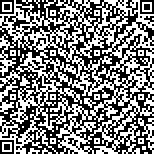本文已被:浏览 1958次 下载 4237次
投稿时间:2016-02-26 修订日期:2016-03-01
投稿时间:2016-02-26 修订日期:2016-03-01
中文摘要: 2016年1月大气环流主要特征为:北半球共有三个极涡中心,强度较常年同期偏强,欧亚中高纬环流经向度大,东亚大槽和南支槽均偏强。1月,全国平均降水量25.7 mm,较常年同期偏多94.7%,广东、广西和湖南三省(区)平均降水量偏多3.7倍,为1951年以来同期第一多。1月,全国平均气温-5.3℃,较常年同期(-5.0℃)偏低0.3℃,冷空气和降水活动频繁,共有5次降水过程和4次寒潮过程,其中,1月21—25日,我国大部地区遭受强寒潮天气。此次过程降温幅度大,影响范围广,多地最低气温跌破历史极值。1月28—29日,南方出现历史同期罕见的强暴雨天气过程。
中文关键词: 强寒潮, 雨雪冰冻, 暴雨, 大气环流
Abstract:The following are the main characteristics of the general circulation of atmosphere in January 2016. There were three polar vortex centers which are stronger than normal years. The atmospheric circulation presented a great meridionality in middle latitude in Eurasia. The East Asia major trough and the south branch trough were stronger than those in average condition. The monthly mean precipitation was 25.7 mm around the country, 94.7% above the normal value, especially in Guangdong, Guangxi and Hunan it is 3.7 times more than normal, breaking the record of precipitation for the same periods since 1951. The monthly average temperature was -5.3℃, which is 0.3℃ lower than the normal years, but cold air activities appeared frequently. Totally, four cold air processes and five precipitation processes were reported. During 21-25 January, most part of China suffered from the strong cold surge which is characterized by a sharply drop in temperatures, extremely strong and widely affected area. The cold surge help many places of China build a new record for cold temperature. From 28 to 29 January, the southern part of China experienced a rarely seen severe rainstorm process.
文章编号: 中图分类号: 文献标志码:
基金项目:
引用文本:
江琪,马学款,王飞,2016.2016年1月大气环流和天气分析[J].气象,42(4):514-520.
JIANG Qi,MA Xuekuan,WANG Fei,2016.Analysis of the January 2016 Atmospheric Circulation and Weather[J].Meteor Mon,42(4):514-520.
江琪,马学款,王飞,2016.2016年1月大气环流和天气分析[J].气象,42(4):514-520.
JIANG Qi,MA Xuekuan,WANG Fei,2016.Analysis of the January 2016 Atmospheric Circulation and Weather[J].Meteor Mon,42(4):514-520.

